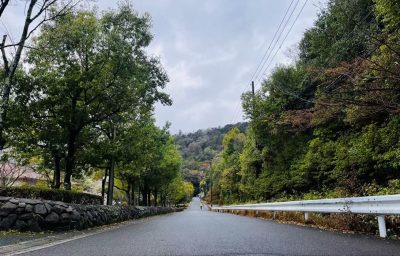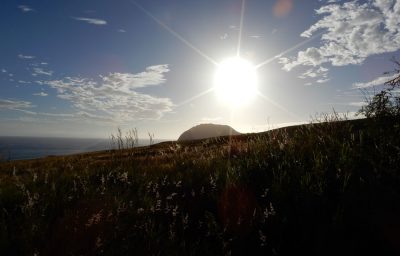COMMUNICATIONS
Research…while Calmly Contemplating the Beauty beyond My Window
In 2021, I arrived at Nichibunken as a Visiting Research Scholar at the end of summer. It feels like not much time has passed, but the other day, when I was commissioned to write this essay, I realized that summer is once again upon us and my life here as a researcher is already in its final phase.
When I came to Japan as a Japan Foundation Research Fellow back in 1996, my affiliation was with a university in Yokohama, but thanks to the introduction of a friend, I participated in Professor Suzuki Sadami’s collaborative research project on the magazine Taiyō on several occasions. From that time on, I was enthralled by Nichibunken’s outstanding research environment, and the natural beauty of its surroundings. My dream was to one day conduct research here if the opportunity arose. For various reasons, the opportunity took a long time to present itself, but now, twenty five years later, I have finally realized my dream.
My work this year has involved me writing a book on modern Sino-Japanese relations, looking specifically at “Intellectual Exchange between the Sinologist Yamamoto Baigai and Chinese in Japan.” I was especially interested in the reception Baigai gave to Chinese students at his private college. As is well known, between the end of the Sino-Japanese war in 1895 and the 1930s large numbers of Chinese students came to Japan to study . They entered a variety of different schools, but only a minority joined colleges opened by private individuals. Baigai got to know many Chinese intellectuals during his tour of China in 1897, and through the network he established, accepted around ten exchange students at his college, including two that very year. Those two who joined in 1897 were the first Chinese students to be dispatched to Japan from a Chinese school. Baigai was thus a pioneer in educating Chinese students in Japan, and therefore extremely important in the history of Sino-Japanese cultural exchange.

The first Chinese students at the college run by Baigai. The two Chinese students stand either side of a Japanese student. The background is thought to be Osaka Castle. (Collection of the Kochi Liberty and People’s Rights Museum)
My time at Nichibunken is about three quarters done. I can only say that I have experienced the utmost happiness here. I have not been worn down by administrative work. Instead, I have been able to engage in research to my heart’s content, while gazing at the scenary out of my study window.

From the window of my study
That is enough about my research. Climbing mountains is one of my hobbies, and during this last year I have often climbed the mountain behind Nichibunken. Examining the plant life and gazing at the scenery was the greatest pleasure for me. In the mountains all sorts of plants grow. I was struck by the wild persimmon trees weighed down with small but vibrant orange fruit. The part of the mountain immediately behind Nichibunken is a wild bird park, and the colorful fruit is fine feed for the birds.
Rumor has it that there are wild boar and monkeys in the mountains. I have never caught sight of either. Deer I meet frequently, though. Sometimes one or two; other times several deer walking calmly together through the forest. When we go outdoors we get a real sense that we humans are merely one biological element, so to speak, and that we live with the blessings of nature. When you climb to the top of the mountain, you can look down over the Kyoto basin. To be honest, when I first saw this view it really impressed me, and I photographed the scene in wide-eyed wonder. Rooted to the spot, I checked off one by one the mountains, rivers and famous sites that I had previously seen up close.

Looking out over the Kyoto basin.

Icicle “blinds” beneath the eaves of the library (Photo by author, 21 February 2022)
And so to my conclusion. There is much else I would like to say about my time here: my feelings of gratitude to the professors and staff who have helped me; the collaborative research meetings; the library collection; life in Nichibunken House; “Akaoni” restaurant; the cherry trees at the entrance; Kyoto in the snow; and the icicles hanging like bamboo blinds beneath the eaves of the library—the first I have seen since I was a child over 50 years ago. However, I have already exceeded my word limit, and so must lay down my pen. Thank you!




